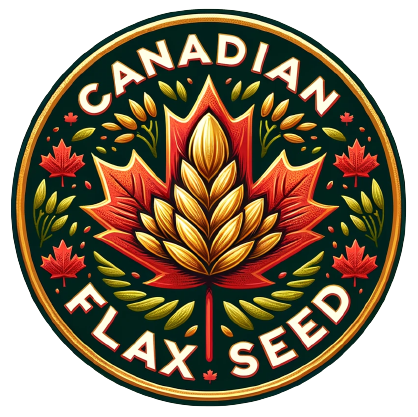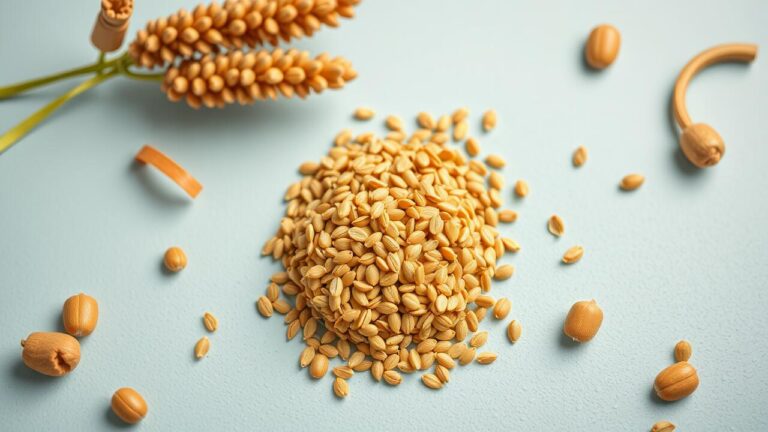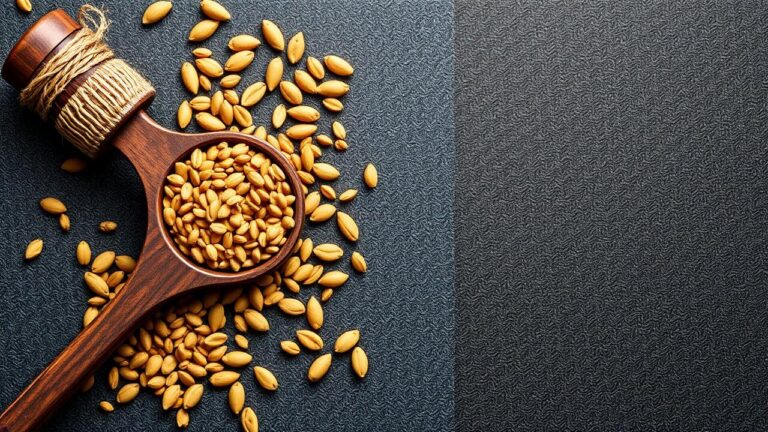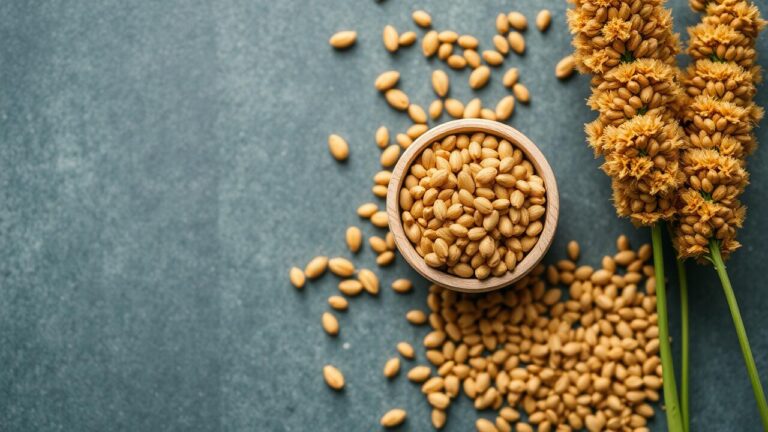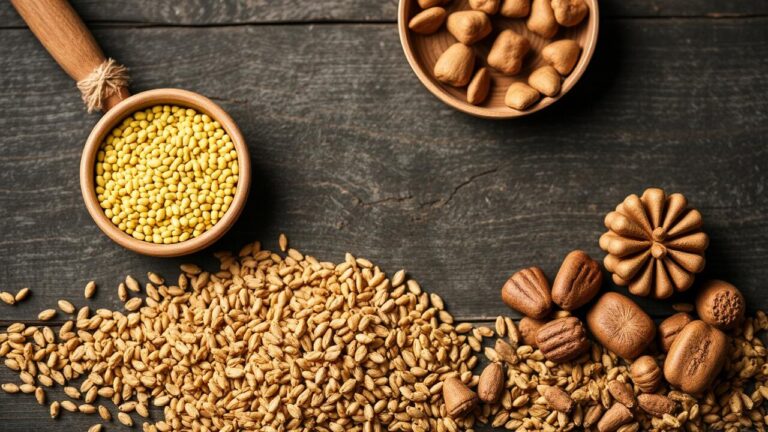European Voyagers and the Arrival of Flaxseeds in Canada
Table Of Contents
European Voyagers and the Arrival of Flaxseeds in Canada: A Historical Journey
Key Takeaways
- Exploration of European travelers’ expedition to Canada
- Importance of flaxseeds in farming practices
- Incorporation of flaxseeds into Canadian territory
- Effects on agricultural practices in Canada
- Economic benefits of flaxseeds for Canada
- Cultural impact of flaxseeds on Canadian society
European Voyagers And The Arrival Of Flaxseeds In Canada | The Journey of European Voyagers to Canada
European Voyagers and the Arrival of Flaxseeds in Canada marked a significant turning point in the continent’s agricultural history. These intrepid explorers, navigating the waterways of both eastern and western Canada, played a crucial role in the transport of flaxseed to the region. As they settled in various parts of Canada, they recognized the potential of this versatile crop, leading to initial cultivation attempts that would ultimately shape the landscape of Canadian agriculture. The seeds not only contributed to the diets of Canadian inhabitants but also facilitated economic growth, highlighting the enduring legacy of European Voyagers and the Arrival of Flaxseeds in Canada.
| Voyager Name | Year of Arrival | Region Explored | Impact on Agriculture |
|---|---|---|---|
| Jacques Cartier | 1534 | St. Lawrence River | Introduced flax as a potential crop |
| Samuel de Champlain | 1608 | Quebec | Recognized flaxseed’s economic potential |
| William Pitt | 1764 | Ontario | Promoted cultivation for trade and dietary needs |
| Henry Hudson | 1610 | Hudson Bay | Explored and documented flax’s survival in the region |
European Voyagers and the Arrival of Flaxseeds in Canada | Early Exploration and Encounters
The European Voyagers and the Arrival of Flaxseeds in Canada marked an important chapter in the region’s agricultural history. These early explorers ventured into the vast landscapes of Upper Canada, navigating through the Canadian Shield and southwest regions. As they encountered the diverse ecosystems, they recognized the potential of flax, a crop already utilized in European diets, for both its fibers and seeds. The adoption of flax cultivation became a focal point for French Canadian settlers, who integrated this new crop into their agricultural practices, enhancing their subsistence.
Initial encounters between European voyagers and Indigenous peoples also played a crucial role in this agricultural transition. Indigenous communities shared knowledge of local growing conditions and agricultural techniques, which informed the settlers’ approaches to flax cultivation. The blending of traditional Indigenous practices with European agricultural methods laid the groundwork for the eventual success of flax as a staple in the burgeoning Canadian economy, ultimately impacting life in regions like the Canada Life Centre. The result was a transformative period that would shape the future of farming in Canada.
Notable Voyagers and Their Contributions
European Voyagers and the Arrival of Flaxseeds in Canada marked a significant chapter in North American agriculture. Notable explorers and settlers played a vital role in transporting flaxseed across the transatlantic route. These voyagers not only introduced flaxseeds to various regions but also established vital connections between the Canadian provinces and the agricultural practices of Europe. Their journeys contributed immensely to the burgeoning agricultural landscape within the dominion of Canada.
Many of these voyagers were instrumental in laying the groundwork for future agricultural success in Canada. Their commitment to exploration and cultivation paved the way for the expansion of the flax industry, ultimately benefiting the Canadian Pacific Railway and the Canadian National Railway. The introduction of flaxseeds into the Canadian provinces exemplified the lasting impact of these voyagers on the agricultural development of the continent.
The Significance of Flaxseeds in Agriculture
Flaxseeds have played a pivotal role in Canadian agriculture, especially following the European Voyagers and the Arrival of Flaxseeds in Canada. These early explorers introduced perennial flax to the region, recognizing its potential as a versatile and valuable crop. As cargoes of flaxseeds made their way across the Atlantic from Western Europe, they laid the foundation for a burgeoning flax industry in Canada. Statistics Canada highlights how the Canadian government has supported the growth of this sector, encouraging farmers to adopt cultivation techniques that enhance productivity. The integration of flaxseeds into agricultural practices not only diversified crop production but also contributed significantly to the economic landscape for early settlers.
- Flaxseeds are known for their high omega-3 fatty acid content, promoting healthy farming practices.
- The cultivation of flax can improve soil health by contributing organic matter and supporting crop rotation.
- Flax fibers are used in textiles, providing a sustainable source of raw material for the fashion industry.
- The market for flaxseed oil has expanded, driving demand from the food and cosmetics industries.
- Flaxseeds are an excellent source of dietary fiber, benefiting both animal and human health.
- Canadian farmers have adopted innovative practices to enhance flaxseed yield and quality.
- Flax cultivation supports rural economies, creating jobs and opportunities for local communities.
Nutritional Benefits of Flaxseeds
Flaxseeds, introduced during the period of European Voyagers and the Arrival of Flaxseeds in Canada, have become a significant part of the Canadian diet due to their impressive nutritional profile. These tiny seeds are rich in omega-3 fatty acids, lignans, and dietary fiber, all of which contribute to heart health and improve digestive function. Provinces like Saskatchewan have embraced flaxseed cultivation, recognizing its value not only for personal well-being but also for its potential in agricultural practices across various regions in Canada.
The contribution of flaxseeds to Canadian nutrition is enhanced by their versatility in culinary applications. They can be added to smoothies, baked goods, and cereals, making them a popular choice among health-conscious consumers. As immigrants settled and farmed the land, particularly influenced by the Dominion Lands Survey, flaxseed became a staple that supported both traditional diets and modern health trends. Today, education about these benefits is shared in institutions such as the Canadian Museum for Human Rights, highlighting the journey from the early exploration to the present-day transportation hub of nutritious agriculture in Canada.
Flaxseeds in European Diets
European diets incorporated flax seeds due to their rich nutritional profile and versatility. As European voyagers encountered the vast landscapes of Canada, they recognized the potential of flax as a valuable crop. The nutritional benefits of flax seeds were well-documented, leading to their inclusion in various traditional recipes. Beyond just a source of fiber, flax seeds became a staple for many families, especially those living in the emerging settlements like the Red River Colony and Fort Garry.
The arrival of flax seeds in Canada marked a significant shift in agricultural practices. European voyagers played a crucial role in the transportation of these seeds across the Atlantic, often bringing them on ships that traversed international waters. Locations like Flin Flon would later see the adaptation of flax farming techniques. As settlers embraced flax cultivation, this ancient grain became integral not only to their diets but also to their economy, establishing a connection between European traditions and Canadian agriculture.
The Introduction of Flaxseeds in Canada
European voyagers played a pivotal role in the arrival of flaxseeds in Canada, a journey that intertwined with the fur trade and the ambitions of Canadian explorers. As these voyagers traversed regions such as Ontario and ventured toward the Pacific, they discovered the potential of flaxseed as a valuable agricultural resource. The introduction of flaxseed marked a significant shift for Canadian flax growers, who began to utilize flaxseed not just for its oil but also for its nutritional benefits. This early cultivation opened avenues for Canada to become a noteworthy player in the world flaxseed market, setting the stage for a robust industry in the years to follow. European voyagers and the arrival of flaxseeds in Canada thus laid the groundwork for a lasting agricultural legacy.
The Role of Voyagers in Transportation
European exploration played a crucial role in the transportation of flaxseeds to Canada. European voyagers carefully collected flaxseed samples during their expeditions, recognizing the seeds’ potential to thrive in the Canadian climate. These early explorers navigated the waterways and landscapes of the Canadian Shield region, laying the groundwork for future agricultural endeavors. The journey embarked upon by these voyagers marked the beginning of the introduction of flaxseeds, setting in motion a significant agricultural movement that would later flourish, particularly in Saskatchewan.
As the voyagers returned home, they conveyed valuable information about the viability of flaxseeds in the unique Canadian climate. The findings from these voyages eventually led to initial cultivation attempts in various regions, including the Canadian museum archives that detail the history of flaxseed development. By bridging their explorations with the practical aspects of farming, the European voyagers significantly influenced the future of Saskatchewan flax development. Their contributions established a foundation for a thriving industry that would be integral to Canada’s agricultural identity.
Initial Cultivation Attempts
European settlers made their first attempts to cultivate flax following the initial introduction of the seeds by explorers. The arrival of flaxseeds marked a significant turning point; these seeds had the potential to evolve into a vital crop. Their adaptability to the Canadian climate offered new agricultural possibilities. Early settlers quickly recognized the economic benefits of flax, leading to increased interest in this crop. The trans-shipment centre for flax products allowed for the flourishing of a new agricultural venture.
As cultivation efforts progressed, Canada began to emerge as a major flax exporter. The total flax production increased as settlers honed their farming techniques. This not only transformed local farming practices but also laid the groundwork for the Canadian industry centered around flax. European Voyagers and the Arrival of Flaxseeds in Canada significantly influenced agriculture, creating a lasting legacy of flax cultivation that would span generations.
Impact on Canadian Agriculture
The journey of European voyagers and the arrival of flaxseeds in Canada significantly shaped agricultural practices in the region. Early explorers recognized the potential of this versatile crop, leading to initial cultivation attempts by Canadian producers who experimented with growing flax. Their efforts contributed to the rise of flax production, resulting in the creation of valuable flax bales for trade. Some farmers initially encountered challenges, notably with unretted flax, prompting the establishment of the flax commission to improve processing methods. Recent arrivals in the agricultural sector began to understand the economic benefits of flax, leading to a thriving industry where flax wasn’t just a crop but a catalyst for community development. The legacy of European voyagers and the arrival of flaxseeds in Canada continues to influence farming techniques and economic opportunities in the country today.
| Year | Event | Impact on Agriculture |
|---|---|---|
| 1600s | Arrival of Flaxseeds | Introduction of a versatile crop, diversifying agricultural practices. |
| 1800s | Establishment of Flax Commission | Improvement in processing methods addressed initial challenges. |
| 1920s | Flax Production Boom | Increased economic opportunities through trade and export of flax bales. |
| 21st Century | Modern Flax Cultivation | Continued adaptation of farming techniques and community development. |
Adaptation of Flaxseed Farming Techniques
The introduction of flaxseeds to Canada marked a significant shift in agricultural practices as Canadian farmers embraced the techniques brought by European voyagers. The adaptability of the flax plant to the Canadian climate allowed it to thrive in various regions, particularly in the present Saskatoon location. Early exploration by European voyagers and the arrival of flaxseeds in Canada laid the groundwork for flax production, which soon evolved into a vital aspect of Canadian grain farming. The knowledge shared among flax producers from different European countries also played a crucial role in improving cultivation methods.
Canadian members of the agricultural community quickly recognized the potential of flaxseeds, not only as a crop but also as a means to connect with their roots from Roman civilizations. This historical perspective inspired many Canadian musicians and artists to express their heritage through their work, reflecting the cultural significance of flax in the fabric of Canadian life. As these farming techniques developed, they incorporated traditional practices from Europe, adjusting them to the unique conditions in Canada and ensuring the successful growth of this valuable crop.
Economic Implications for Early Settlers
The arrival of flaxseeds in Canada, driven by European Voyagers and the Arrival of Flaxseeds in Canada, had significant economic implications for early settlers. With the introduction of the flax crop, many Saskatchewan flax farmers quickly recognized the potential of cultivating this versatile plant. Over time, the average flax yield began to improve, allowing Saskatchewan farm flax to become a crucial component of the agricultural economy. This development not only supported local farming communities but also provided the opportunity for trade with international countries eager for Canadian flax fibre.
Saskatchewan flax growers found that the crop contributed to diverse agricultural practices and increased the profitability of their farms. The expansion of flax cultivation fostered a sense of community among the settlers, as they shared knowledge and resources to optimize their flax production. The economic benefits from the flax industry also encouraged further immigration, attracting new arrivals to the promising lands of Canada. This chain reaction established a robust agricultural foundation that would support future generations.
Flaxseeds’ Contribution to the Canadian Economy
The arrival of flaxseeds in Canada, facilitated by European voyagers, marked a significant turning point for the agricultural economy. European settlers, bringing seeds from their homelands, saw potential in the brown flax that flourished in neighbouring lands. The voyagers transported the seeds across the Atlantic on a whole ship, enabling early cultivation efforts in Canadian soil. As flax growers embraced this versatile crop, it became integral not only to local diets but also to the burgeoning economy, laying the groundwork for a thriving industry that would evolve over the years. This initial introduction emphasized the importance of the European voyagers and their role in establishing a new agricultural landscape.
- Flaxseeds are a staple in Canadian agriculture, contributing significantly to food production.
- The flax industry supports thousands of farmers across Canada, ensuring job creation in rural areas.
- Canada is one of the world’s largest exporters of flaxseeds, boosting trade and international relations.
- Flaxseed oil has gained popularity in health food markets, increasing demand and economic opportunities.
- The growth of the flaxseed market has led to advancements in agricultural technology and practices.
- Local processing facilities have emerged, further enhancing the economic impact of flaxseed production.
- Flaxseeds contribute to sustainable farming practices, as they can improve soil health and crop rotation systems.
Rise of the Flax Industry
The influx of European voyagers significantly influenced the rise of the flax industry in Canada. As they explored the lands and established colonies, they recognized the potential of flax as a vital crop. Good flax sales were achieved through the cultivation of high-quality fibers and seeds. This led to the establishment of organizations like Saskflax, which aimed to enhance the production and marketing of flax in the region, allowing Canada to become a prominent player in the global flax market.
The versatility of flax straw also contributed to its economic appeal, enabling various applications beyond seed production. Farmers adapted their practices to improve yield and quality, which propelled the industry forward. The westward expansion of settlement further encouraged interest in flax cultivation, as new lands were deemed suitable for its growth. European voyagers and the arrival of flaxseeds in Canada marked a pivotal moment that transformed agricultural practices and laid the groundwork for a flourishing flax industry.
Modern Uses of Flaxseeds in Canada
Flaxseeds have found a versatile place in modern Canadian society, evolving from their historic introduction by European Voyagers and the Arrival of Flaxseeds in Canada. Today, they are celebrated for their health benefits and are a popular ingredient in various products. Canadian manufacturers utilize flaxseeds in health foods, baked goods, and nutritional supplements. This adaptability showcases the enduring legacy of the cultivation efforts initiated by early settlers along both coasts and in different territories of this vast country.
The culinary landscape of Canada increasingly features flaxseeds, thanks to their nutritional profile and ease of incorporation into diets. From jet-setters enjoying flax-infused smoothies to passengers on domestic flights opting for snacks made with this superfood, the seed has gained prominence in everyday consumption. This rise highlights the ongoing influence of European Voyagers and the Arrival of Flaxseeds in Canada, impacting regions across the country and positioning flax as a staple in both traditional and contemporary Canadian cuisine.
Cultural Influence of Flaxseeds
The cultural influence of flaxseeds in Canada can be traced back to the European Voyagers and the Arrival of Flaxseeds in Canada. These early explorers not only introduced the plant but also established stations that became critical in disseminating flaxseed knowledge among Indigenous communities and settlers. Flaxseeds gradually integrated into local diets and traditions, reflecting the fusion of European agricultural practices with Indigenous customs. As communities adapted to the cultivation and use of flaxseeds, they fostered a unique agricultural heritage that continues to resonate in Canadian cuisine and farming today. The narrative of flaxseeds weaves together the legacies of exploration and adaptation, highlighting their enduring significance in shaping cultural identities across the nation.
Conclusion
The journey of European Voyagers and the arrival of flaxseeds in Canada marked a significant turning point in agricultural practices, particularly for Saskatchewan flax farmers. These early arrivals introduced the potential of the flax crop, transforming it into a staple within Canadian agriculture. Saskatchewan farm flax soon became synonymous with quality, appealing not only to local markets but also to international countries eager to import high-quality flax fibre. The contributions of Saskatchewan flax growers played a crucial role in establishing the region as a leader in the flax industry, enabling the average flax yield to flourish. Through adaptation and dedication, these pioneers set the stage for a thriving economic landscape surrounding the cultivation of flaxseeds.
FAQS
How did the Europeans’ arrival affect the transport of flaxseeds in eastern Canada, particularly regarding the role of the Canadian Northern Railway and international airports?
The arrival of Europeans on the shores of the American continent marked the first arrival of utilized flaxseed in the area. This introduction allowed flax to evolve as an important crop throughout Canada, especially in provinces like Saskatchewan. The development of transportation systems, including the Canadian Northern Railway, facilitated the movement of flaxseed across provinces and territories in Canada. Furthermore, international airports played a crucial role in exporting Canadian flaxseed and connecting eastern Canada to global markets, thereby enhancing its distribution and economic significance in the North American continent.
How did the voyage of European explorers influence the evolution of flax in Canada and its transport across provinces or territories, such as Saskatchewan?
The arrival of European voyagers initiated significant changes in how flax evolved in Canada, particularly in provinces like Saskatchewan. Their transportation methods, including the use of jets for long-distance shipping, facilitated the movement of flaxseeds across the country, impacting transport Canada’s agricultural strategies.
How did the voyage of European voyageurs impact the arrival of flaxseeds in the province or territory in Canada, especially in Saskatchewan?
The arrival of European voyageurs played a significant role in introducing flaxseeds to Saskatchewan, Canada, by facilitating trade routes and agricultural practices. Their voyages helped to establish connections that made it easier for flax to be cultivated and transported across the province or territory in Canada.
How did satellite tracking contribute to the arrival of flaxseeds in Canada?
Satellite tracking has played a significant role in monitoring the logistics involved in arriving shipments of flaxseeds in Canada. By utilizing satellite technology, suppliers can ensure timely deliveries and optimize routes, thus facilitating the effective transport of flaxseeds across the country.
What were the key historical influences on the arrival of flaxseeds in Canada during the era of European exploration?
The arrival of flaxseeds in Canada was significantly influenced by European exploration, which opened up trade routes and introduced agricultural practices. European voyagers brought flaxseeds to Canada, promoting their cultivation in various regions and impacting farming practices in subsequent years.
